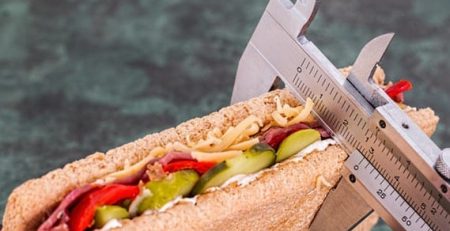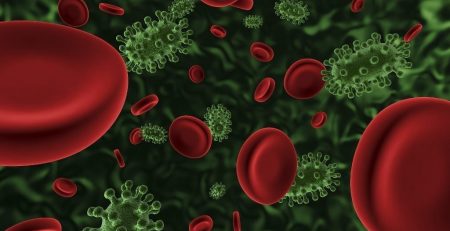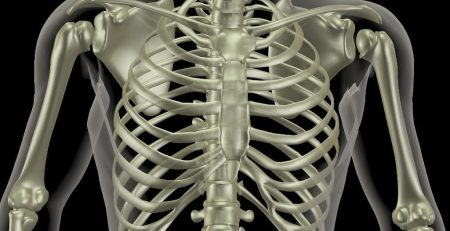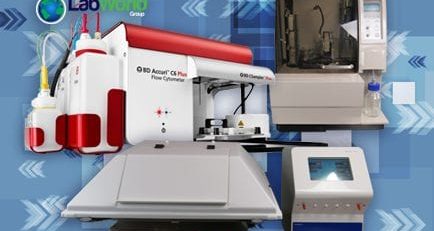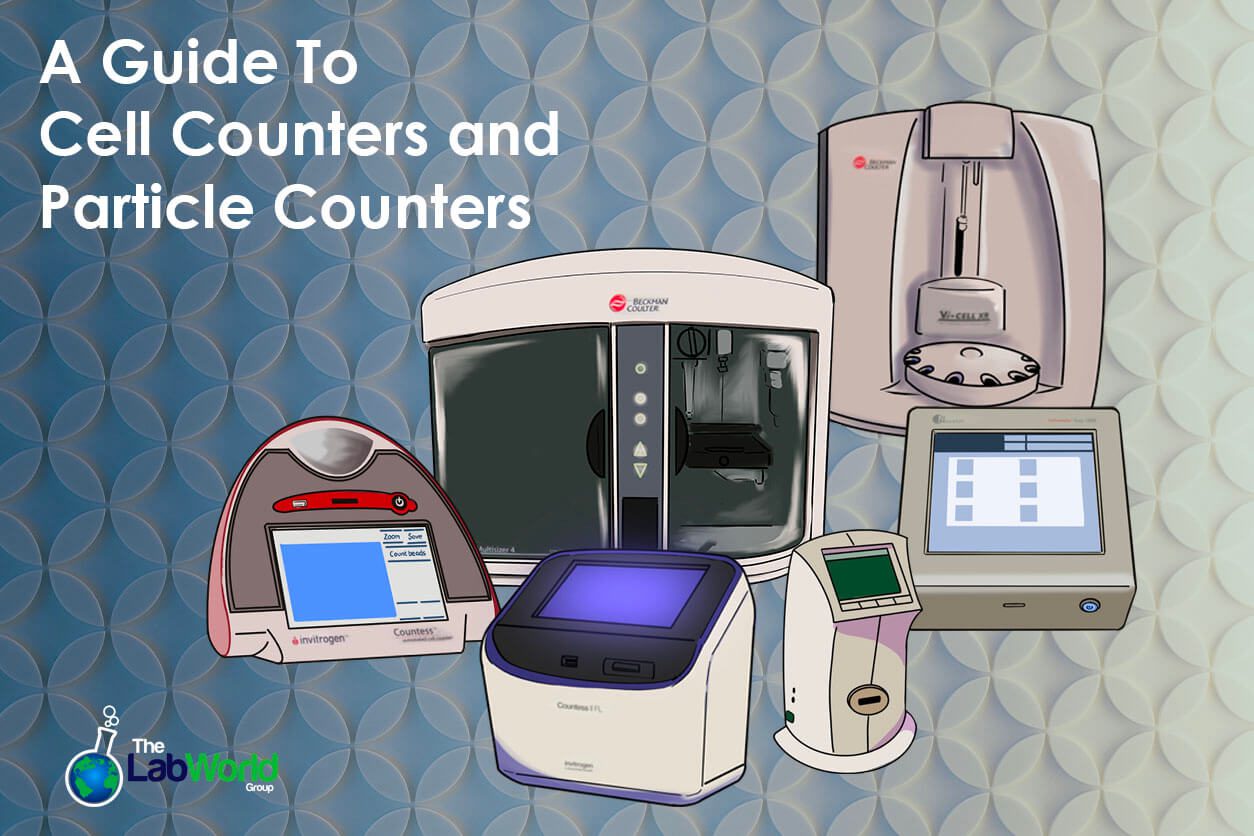
A Guide to Automated Cell Counters
Amanda2024-05-17T12:57:13+00:00What is A Cell Counter?
Did you know we’ve been able to see cells in a sample for around 300 years? While early simple microscopes were invented in the late 13th century to extend the burgeoning field of eyeglasses, they didn’t have enough magnification power to see cells until 1665. An inventor named Antonie van Leeuwenhoek in 1660 Holland found that curving the edges of a lens through grinding and polishing increased the magnifications up to 270x. In 1665, Rober Hooke used a compound microscope to observe cells, published a book about Microgaphia, and pioneered the term “Cell.”
Microscopes remained the same for around 200 years, with few adopters and fewer innovations. It wasn’t until the 1830s when Joseph Jackson Lister and William Tulley developed a microscope that corrected two significant problems with magnification: Image blurring and chromatic aberration. Once these problems were solved, the microscope made its way into more and more laboratories, and cells became a focus of studies. Louis-Charles Malassez then crafted a hemocytometer, a thick glass slide with a grid and known volume, that allows users to manually count the cell concentration in that volume and calculate the concentration in the overall fluid the sample was taken from.
Manual counting is laborious, however, so enters the Automated Particle Counter. Automated particle and cell counters are instruments built to streamline and accurately gather how many cells or particulates are in a sample. They can also collect information on the size, viability, and type. The first came around in 1953, thanks to Wallace Coulter, who figured out how to count and size particles based on electrical conductivity. To this day, many automated cell counters use this method.
What’s the difference between cell counting and particle counting?
Cell counters and Particle counters may seem interchangeable at first glance, but they’re specific to different uses in the lab. A particle counter, such as the Coulter Multisize 3 and 4, is used, just as the name suggests, to quantify and classify any particulate in a sample. These particulates include drugs, food, clay minerals, paints, dyes, and single-cell organisms such as bacteria and blood cells. Cell counters are explicitly geared towards cells and can be trained on a particular cell type. Cell analyzers have software to interpolate the count in a sample and differentiate between living and dead cells. Counters such as Thermo’s Countess FL line have fluorescent detection for more complex samples.
Types of Automated Cell Counter Methods
A Coulter counter uses the Coulter Principle, in which cells interrupt an electrical current. Cells are resistant to electricity, and by drawing cells, one at a time, through a tiny gap between two electrodes passing a charge, the cell comes through and interrupts the signal, and the cell is counted. The amount of electric resistance also helps calculate the volume of the cell.
Flow cytometry uses a narrow stream in which cells pass through a laser. This laser not only quantifies but also gathers information on the shape of the cells and the internal and external structures and measures the composition of proteins. For this reason, while they can provide a cell count, flow cytometers are in a category all their own.
Image analysis relies on a statistical classification algorithm to analyze a high-quality image capture of a sample. This algorithm analyzes and sorts the cells into a class. Image analysis has the advantage of being not only cost-effective but also easily accessible to most users.
Another method of cell counting is stereological cell counting in histology. However, this method requires manual decision-making as to whether an object should be included in the count and can not be fully automated. Other more indirect methods include spectrophotometry and impedance microbiology.
Cost and Benefits of Automated VS Hand counting
There are advantages to counting cells automatically or by hand, and it comes down to just how accurate a count you need versus how much time you can or want to spend. Some automatic counters may have difficulty distinguishing cells when they’ve clumped together. Some counters are also a high cost to acquire and operate. Having a biologist decide whether a cell is the right type or alive may be more precise in some cases, but that’s the time taken away from other tasks. If you can make the initial investment, an automated cell counter can provide you with faster results that are repeatable and can also offer characteristics such as size at the same time.
What to consider in purchasing
When it comes time to select a counter, you have a few things to consider. How accurate do you need your counter to be? Another question to ask is, do you need it also to measure the size and health of your population? How easy is it to use and onboard your lab team, how reproducible, and will it hold counts in memory for comparison? You may also want to consider how easily you can acquire supplies and dyes, how much room on the lab bench you have, and all of that finally translates into what fits into your budget. With these answers, you can select the right instrument to suit your needs, and you’re on your way!
Particle and Cell Counter Manufacturers
Beckman Coulter pioneered the automatic counters. Their instruments primarily employ the Coulter Principle with cell viability analyzers like the vi-cell and particle sizers like the Multisizer 4e that can detect sub-cellular and microparticles.
Thermo Fisher offers the Invitrogen Countess series of imaging counters. These compact numbers use disposable or reusable glass slides and a robust machine-learning image analysis algorithm with autofocus and lighting. You get more power in a smaller package with a range wider than a regular hemocytometer. The countess series also has a fluorescent option, covering up to 15 fluorescent channels.
Other Manufacturers include the Nexcelom Cellometer auto 1000, which provides a compact trypan blue analyzer that uses brightfield imaging to provide statistics on the count, concentration, size, and viability. Biorad’s TC20 counter collects information in less than 30 seconds with a simple slide. Results are shown on the touchscreen controller, with or without trypan blue.
Final Thoughts
Whether you need robust post-analysis, precise counts, or quick turnarounds, there’s a counter out there. Finding the right instrument to fit your budget can be challenging, but introducing a reliable method that frees up scientists for other work gives you a quick return on your investment.
Another way to save is by buying a gently used instrument with much life left to give. Used lab instruments keep e-waste out of landfills, saving your overall budget and extending your reach further. We meticulously check each device that comes to us before we list it, making sure that it’s up to the manufacturer’s specifications and providing you with the reports to prove it.
Contact us today about our selection of cell counters!





